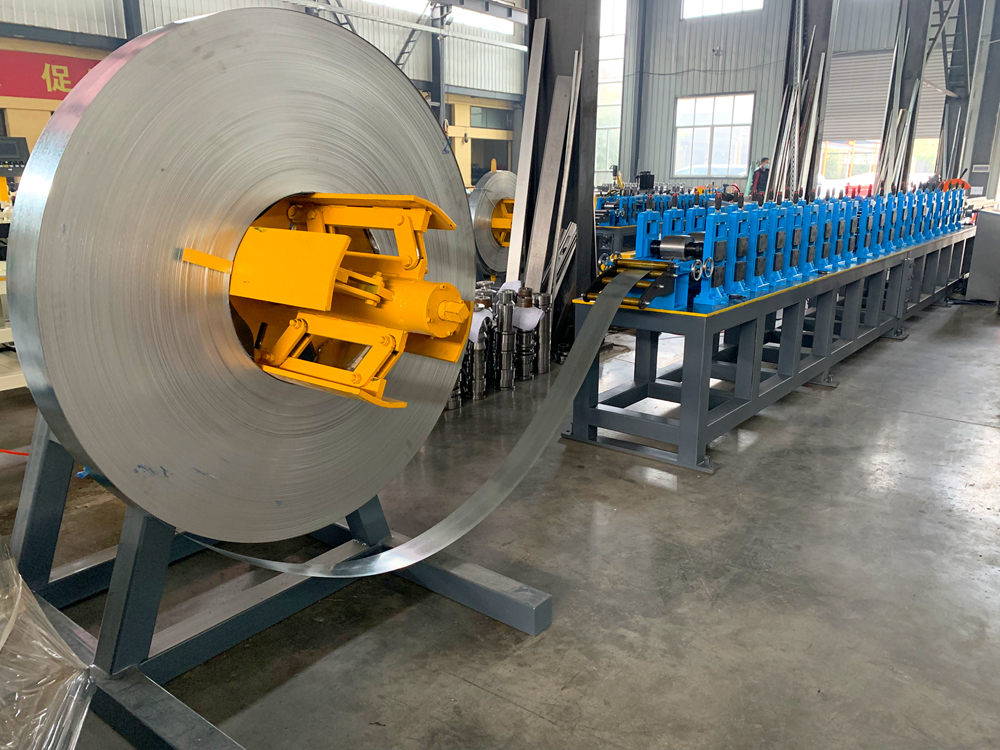
The Wall Angle Light Keel Forming Machine An Essential Tool in Modern Construction
In the ever-evolving landscape of construction technology, the wall angle light keel forming machine stands out as a crucial piece of equipment for efficient building practices. Designed to manufacture light gauge steel profiles, this machine plays a significant role in the prefabrication of wall systems, making it a vital asset for construction businesses aiming to enhance productivity and reduce labor costs.
Understanding the Wall Angle Light Keel Forming Machine
At its core, the wall angle light keel forming machine automates the process of creating light steel frames, which are used extensively in both residential and commercial buildings. These frames are essential for drywall applications, providing the necessary support for walls and ceilings while maintaining structural integrity. The machine operates by taking flat steel sheets through a series of rollers, which progressively shape the metal into desired profiles without compromising its strength.
The Working Process
The operation of a wall angle light keel forming machine is relatively straightforward. It begins with feeding flat steel strips into the machine, where they are shaped into specific profiles through cold forming processes. Each pass through the rollers gradually bends, cuts, and molds the metal until it reaches the final configuration, which may include flanges and other essential features. The flexibility of these machines allows manufacturers to produce a variety of profile sizes and shapes to meet the specific requirements of different construction projects.
Advantages of Using a Wall Angle Light Keel Forming Machine
1. Speed and Efficiency One of the primary benefits of using a wall angle light keel forming machine is the speed at which it can produce materials. Traditional methods of fabricating metal frames can be labor-intensive and time-consuming. In contrast, automated production reduces the time from design to final product, allowing contractors to meet tight deadlines.

2. Precision and Consistency These machines are engineered for accuracy. The use of computerized controls ensures that each piece is produced with precision, minimizing variations that can occur with manual labor. This consistency is crucial for ensuring that the components fit together seamlessly during installation.
3. Cost-effectiveness By reducing labor costs and material waste, the wall angle light keel forming machine contributes to overall project savings. The ability to produce components on-site also reduces transportation costs and the risk of damage associated with long-haul deliveries of prefabricated elements.
4. Versatility The machine can be configured to produce various profiles, making it suitable for a broad range of applications. From residential framing to commercial buildings, the versatility of these machines allows for adaptability in an industry that often demands customized solutions.
5. Eco-friendliness Light gauge steel is a sustainable building material. It is 100% recyclable and has a minimal environmental footprint compared to traditional building materials. By utilizing this machine, builders contribute to a more sustainable construction practice while benefiting from the unique properties of steel.
Industry Applications
The wall angle light keel forming machine is used in various construction settings. It is particularly valuable in dry construction systems where lightweight materials are preferred. These include residential homes, commercial office spaces, and industrial buildings. Its application is not limited to new constructions; it is also employed in renovations and extensions where modifications to existing structures are necessary.
Conclusion
In conclusion, the wall angle light keel forming machine has become an indispensable tool in modern construction. With its ability to produce high-quality, precision-engineered steel profiles efficiently and cost-effectively, it empowers businesses to meet the growing demands of the market while adhering to sustainable practices. As the construction industry continues to innovate, machines like these will undoubtedly play a key role in shaping the future of building technologies. Embracing such advancements is essential for any contractor looking to stay competitive in a fast-paced environment.